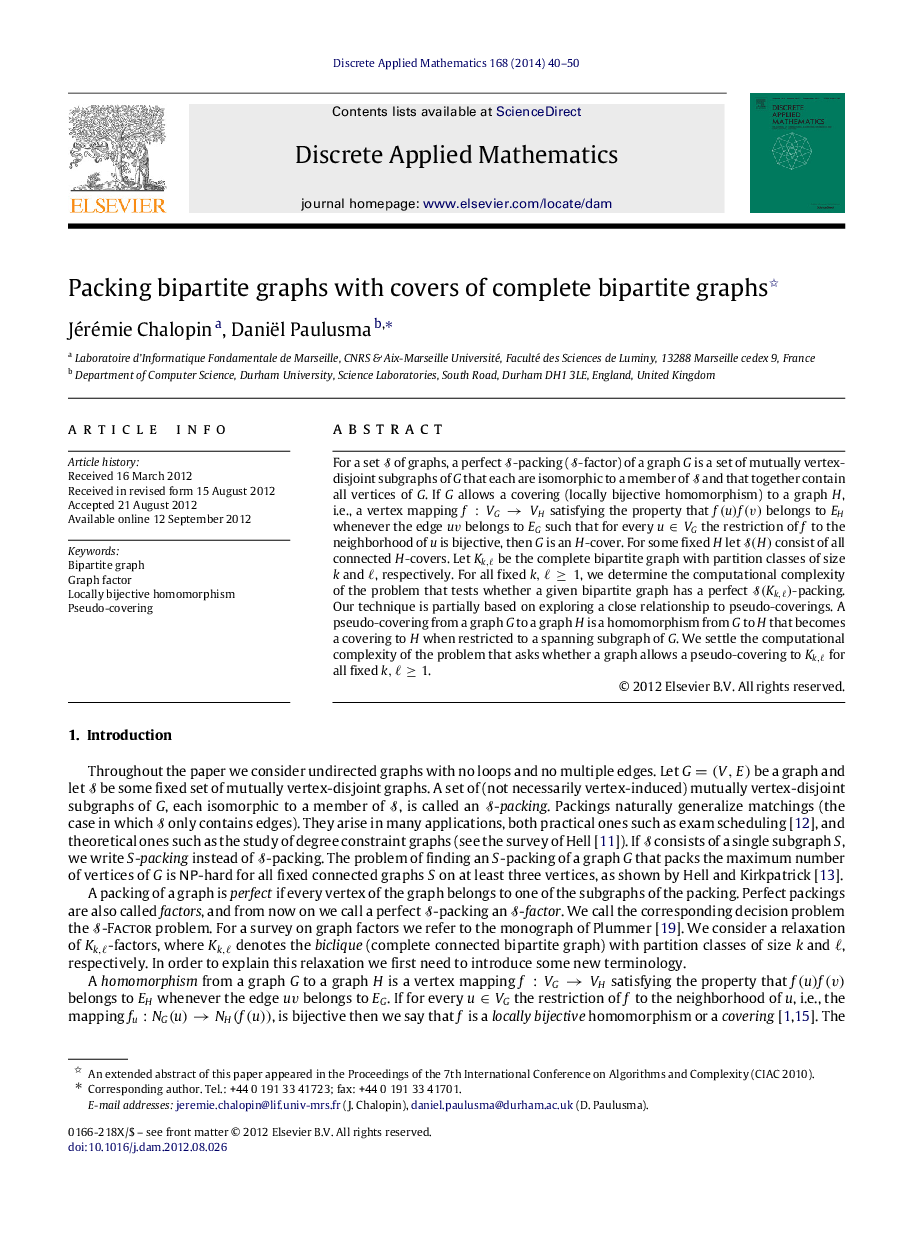| Article ID | Journal | Published Year | Pages | File Type |
|---|---|---|---|---|
| 6872233 | Discrete Applied Mathematics | 2014 | 11 Pages |
Abstract
For a set S of graphs, a perfect S-packing (S-factor) of a graph G is a set of mutually vertex-disjoint subgraphs of G that each are isomorphic to a member of S and that together contain all vertices of G. If G allows a covering (locally bijective homomorphism) to a graph H, i.e., a vertex mapping f:VGâVH satisfying the property that f(u)f(v) belongs to EH whenever the edge uv belongs to EG such that for every uâVG the restriction of f to the neighborhood of u is bijective, then G is an H-cover. For some fixed H let S(H) consist of all connected H-covers. Let Kk,â be the complete bipartite graph with partition classes of size k and â, respectively. For all fixed k,ââ¥1, we determine the computational complexity of the problem that tests whether a given bipartite graph has a perfect S(Kk,â)-packing. Our technique is partially based on exploring a close relationship to pseudo-coverings. A pseudo-covering from a graph G to a graph H is a homomorphism from G to H that becomes a covering to H when restricted to a spanning subgraph of G. We settle the computational complexity of the problem that asks whether a graph allows a pseudo-covering to Kk,â for all fixed k,ââ¥1.
Keywords
Related Topics
Physical Sciences and Engineering
Computer Science
Computational Theory and Mathematics
Authors
Jérémie Chalopin, Daniël Paulusma,
